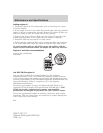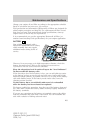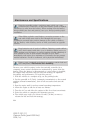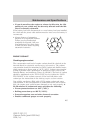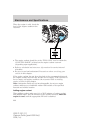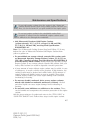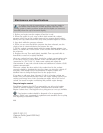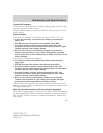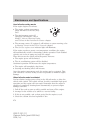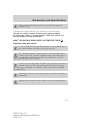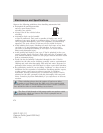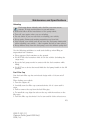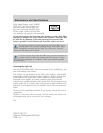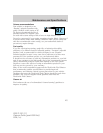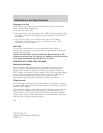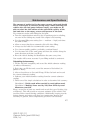
How fail-safe cooling works
If the engine begins to overheat:
• The engine coolant temperature
gauge will move to the red (hot)
area.
• The mini message center (if
equipped) will indicate “Check
Gauges”, refer to Warning Lights
and Chimes in the Instrument Cluster chapter.
• The message center (if equipped) will indicate a system warning, refer
to Message Center in the Driver Controls chapter.
• The Service engine soon indicator light will illuminate.
If the engine reaches a preset over-temperature condition, the engine
will automatically switch to alternating cylinder operation. Each disabled
cylinder acts as an air pump and cools the engine.
When this occurs the vehicle will still operate. However:
• The engine power will be limited.
• The air conditioning system will be disabled.
Continued operation will increase the engine temperature:
• The engine will completely shut down.
• Steering and braking effort will increase.
Once the engine temperature cools, the engine can be re-started. Take
your vehicle to a service facility as soon as possible to minimize engine
damage.
When fail-safe mode is activated
You have limited engine power when in the fail-safe mode, so drive the
vehicle with caution. The vehicle will not be able to maintain high speed
operation and the engine will run rough. Remember that the engine is
capable of completely shutting down automatically to prevent engine
damage, therefore:
1. Pull off the road as soon as safely possible and turn off the engine.
2. Arrange for the vehicle to be taken to a service facility.
3. If this is not possible, wait a short period for the engine to cool.
4. Check the coolant level and replenish if low.
2005 F-150 (f12)
Owners Guide (post-2002-fmt)
USA (fus)
Maintenance and Specifications
270



